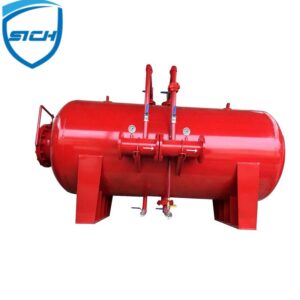Some common causes of damage to fire foam equipment include:
Corrosion.
Fire foam systems contain water and chemicals that can corrode metal components like pipes, tanks, valves, and nozzles over time. Corrosion damage can lead to leaks, clogs, and reduced performance. Using corrosive-resistant materials and coatings can help minimize corrosion.
Freezing.
Fire foam concentrate, water, and foam solutions can all freeze in cold weather environments. Freezing can burst pipes, crack tanks and pumps, and clog nozzles. Proper insulation, heating, and antifreeze additives are required to prevent freezing damage.
Physical Impact.
Fire foam equipment like nozzles, piping, and tanks can be damaged by physical impacts from vehicles, equipment, or personnel in the areas they are installed. Physical barriers and guards may be needed in high-traffic areas.

Overpressurization.
Excessive pressure buildup can rupture pipes, tanks, seals, and gaskets in a foam system. Overpressurization can be caused by faulty pressure relief valves, injecting foam concentrate into the water supply, or elevated water/foam temperatures. Pressure levels should be monitored and limits never exceeded.
Clogs.
Built-up sediment, scale, debris and hardened foam can clog nozzles, valves, and pipes in a foam system. Clogs reduce performance and flow. Regular flushing and cleaning procedures are required to prevent clogs. Screens and filters may also help keep debris out of the system.
Seal and gasket failure.
Seals, gaskets, and O-rings are used throughout foam systems and can fail over time due to aging, corrosion, or excess temperature. Leaking or failed seals will reduce performance and need to be replaced. Regular seal inspection and replacement is important for system reliability.
Equipment fatigue.
Pumps, valves, piping, and tanks can eventually fail or break down over many cycles of use and years of service. Equipment life can be maximized with regular maintenance, but eventual replacement may be required. Monitoring equipment condition and estimated service life helps avoid unexpected failures.
Aging foam concentrates.
Foam concentrates eventually break down over years of storage. Aged or expired foam concentrates may not produce effective foam when injected. Foam concentrates need to be replaced per the manufacturer’s recommendations to ensure good performance.